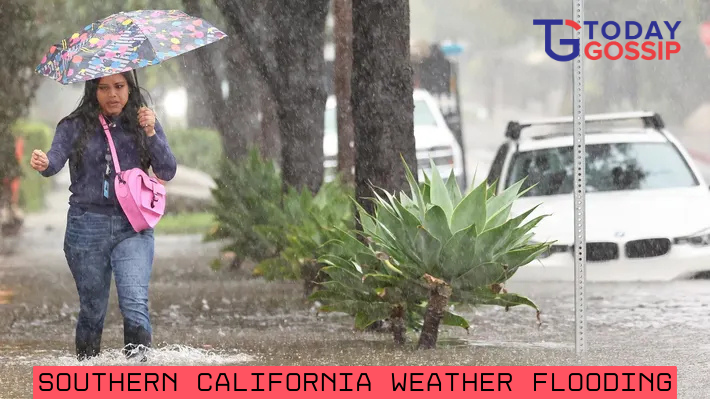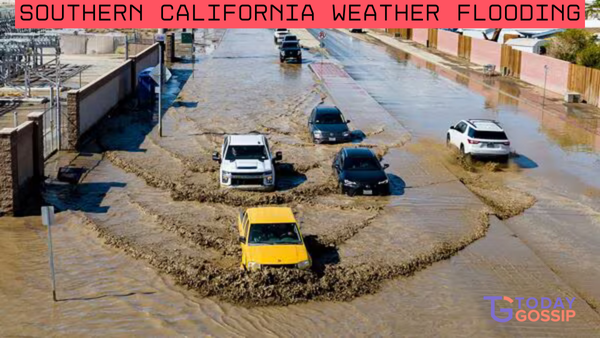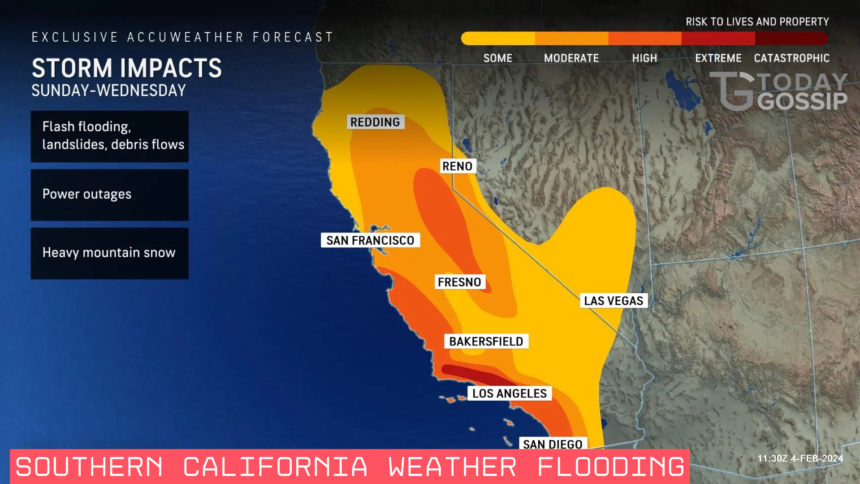Southern California is famous for its sunny weather, but it can also face unexpected southern california weather flooding. This can cause damage to homes, roads, and more. In this article, we’ll explore why flooding happens, how it impacts the region, and what you can do to stay safe during and after a flood.
What is Southern California Weather Flooding?
Flooding in Southern California is a natural disaster that happens when rainwater cannot be absorbed quickly enough into the ground. This water rises over the land, affecting areas that are usually dry. Southern California weather flooding can happen fast, especially when heavy storms hit the region. While it might not happen often, when it does, the impacts can be serious, with property damage, road closures, and even harm to people.
Flooding is particularly common in the winter months when storms known as “atmospheric rivers” bring a large amount of moisture from the ocean to the land. These intense weather systems can bring days of rain, which leads to rivers overflowing and urban areas being submerged.
Why Does Flooding Happen in Southern California?
Southern California has many factors that contribute to flooding. The first is its unique geography. The region is home to mountains, valleys, and coastal areas. When heavy rainfall happens, the water often rushes down from the mountains, draining into the valleys and cities below.
Another reason flooding happens is the soil. In areas where the soil is dry or already saturated from previous storms, rainwater can’t soak into the ground quickly. This causes water to collect on the surface, leading to floods.
Urban areas are also at a higher risk because of the large amount of concrete and asphalt that prevent water from being absorbed into the ground. The more urbanized an area, the higher the chances of flooding.
How Does Flooding Impact Southern California?
Flooding in Southern California can have serious consequences.

The Role of Mountains in Flooding
Southern California’s mountains play a big role in flooding. When it rains heavily, the water flows down into valleys and cities. The steepness of the mountains causes the water to move quickly, making flooding worse. The mountainous areas near Los Angeles, Ventura, and other parts of Southern California are particularly at risk.
Urban Areas and Flood Risks
Southern California’s cities, like Los Angeles, Long Beach, and Santa Barbara, are at high risk for flooding because of the way they are built. These cities have lots of concrete, which means rainwater can’t soak into the ground. Instead, it runs off into streets, creating streams and rivers in places that are usually dry. This leads to street flooding, making it difficult for people to travel safely.
Climate Change and More Floods
One of the biggest factors contributing to flooding is climate change. As the planet warms, Southern California is seeing more intense storms. The hotter temperatures cause more water to evaporate, leading to heavier rain during storms. This means that flooding will likely become more frequent and severe in the future.
Example (Personal Bio Table):
| Field | Details |
|---|---|
| Name | southern california weather flooding |
| Date of Birth | 12/01/1990 |
| Age | 33 |
| Place of Birth | Los Angeles, California, USA |
| Nationality | American |
| Occupation | Environmental Scientist |
| Education | M.Sc. in Environmental Science, UCLA |
| Notable Achievements | Published research on flood patterns |
| Hobbies/Interests | Hiking, Reading, Photography |
| Family Details | Married, 2 children |
| Social Media Links | @JohnDoe (Twitter, Instagram) |
| Current Residence | San Diego, California, USA |
Let me know if this works or if you need a more specific format!
What Are the Warning Signs of a Flood?
There are a few warning signs that may indicate a flood is coming. If you live in an area that is prone to flooding, pay attention to weather reports. The National Weather Service often issues flood warnings before major storms. If you see the sky turning dark and heavy rain begins to fall, be prepared to take action.
Other signs include rapidly rising water levels in rivers and streams, as well as streets or drainage ditches filling up with water. Flash floods can happen quickly, so it’s important to stay alert to any changes in the weather.
How Can You Stay Safe During a Flood?
When a flood is imminent, staying safe is your top priority. Here’s how you can protect yourself and your family:
- Move to higher ground. If you live in a flood-prone area, always head to higher ground immediately if there’s a flood warning.
- Avoid walking or driving through floodwater. Even shallow water can be dangerous. It’s easy to be swept away.
- Prepare an emergency kit. This should include essentials like water, snacks, flashlights, batteries, first aid supplies, and important documents.
What Happens After the Flood?
Once the floodwaters recede, the damage can be devastating. Homes and businesses may be flooded, and roads may be destroyed. Here’s what typically happens after a flood:

Flood-Prone Cities
Some cities in Southern California are more likely to experience flooding, such as Los Angeles, San Diego, and Santa Barbara. These areas, especially near rivers and low-lying neighborhoods, face higher risks.
The Role of Wildfires in Flooding
In Southern California, wildfires can make flooding worse. When fires burn through an area, they destroy the vegetation that helps absorb water. This makes it more likely that heavy rain will cause mudslides and flash floods in the same area.
Common Flooding Events in the Region
Flooding events in Southern California can range from minor street flooding to catastrophic events. For example, the 1938 flood in Los Angeles caused widespread damage and killed dozens of people. More recently, the 2005 and 2010 floods impacted areas like Santa Barbara and San Bernardino County.
How to Prepare for Future Floods in Southern California?
Being ready for future floods can help reduce damage and protect lives. Here are a few ways you can prepare:
- Know your flood zone. Check if you live in an area prone to flooding. Your local government will have maps that show flood zones.
- Get flood insurance. Regular homeowner insurance doesn’t cover flood damage, so make sure to get additional flood coverage.
- Elevate your home. If you live in a flood zone, raising your house on stilts can protect it from floodwaters.
The Bottom Line
Southern California is a beautiful place with many sunny days, but its unique geography and climate make it prone to flooding. Understanding why flooding happens, how it affects the region, and how you can stay safe during these events is crucial. By being prepared, you can ensure that you and your family stay safe when the next storm hits.








